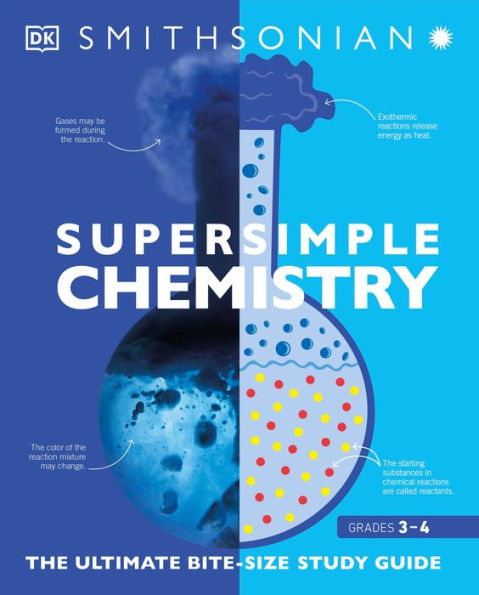Table of Contents
The Scientific Method
How Science Works 10
Scientific Issues 11
Scientific Risk 12
Validity 13
Experiment Variables 14
Safe Experiments 15
Equipment 16
Planning Experiments 17
Organizing Data 18
Math and Science 19
Units of Measurement 20
Charts and Graphs 21
Conclusions 22
Errors and Uncertainty 23
Evaluations 24
Basic Chemistry
Atoms 26
History of the Atom 27
Electron Shells 28
Electronic Structure 29
Elements 30
Isotopes 31
Mixtures 32
Compounds 33
Formulas 34
Deducing Formulas 35
Equations 36
Balancing Equations 37
Purity 38
Formulations 39
Dissolving 40
Grinding 41
Solubility 42
Calculating solubility 43
Chromatography 44
Filtration 46
Evaporation 47
Crystallization 48
Simple Distillation 49
Fractional Distillation In the Laboratory 50
Elements
The Periodic Table 52
History of the Periodic Table 54
Hydrogen 55
Metals 56
Group 1 Physical Properties 58
Group 1 Chemical Properties 59
Group 2 60
Group 3 61
Transition Metals 62
Lanthanides 64
Actinides 65
Carbon 66
Group 4 67
Group 5 68
Group 6 69
Group 7 70
Group 0 71
Structure and Bonding
Ions 73
Ionic Bonding 74
Ions and the Periodic Table 75
Dot and Cross Diagrams 76
Ionic Structures 78
Ionic Properties 79
Covalent Bonding 80
Representing Covalent Bonds 81
Simple Molecules 82
Properties of Simple Molecules 83
Polymers 84
Covalent Network Solids 85
Allotropes of Carbon 86
Fullerenes 87
Metallic Bonding 88
Pure Metals and Alloys 89
States of Matter
Solids 91
Liquids 92
Gases 93
Diffusion in Liquids 94
Diffusion in Gases 95
Changes of State 96
Heating and Cooling Curves 97
State Symbols and Predicting States 98
Nanoscience and Smart Materials
Nanoparticles 100
Properties of Nanoparticles 101
Uses and Risks of Nanoparticles 102
Thermochromic and Photochromic Pigments 103
Shape Memory Materials 104
Hydrogels 105
Quantitative Chemistry
Relative Formula Mass 107
Using the Percentage Mass Formula 108
Moles 109
Mole Calculations 110
Conservation of Mass 111
Changing Mass 112
Moles and Equations 113
Balancing Equations Using Masses 114
Limiting Reactants 115
Calculating Masses in Reactions 116
The Volume of Gas 117
Empirical Formulas 118
A Reacting Masses Experiment 119
Calculating the Reacting Mass 120
Water of Crystallization 121
Calculating Water of Crystallization 122
Concentration 123
Titration Calculations 124
Atom Economy 125
The Advantages of Atom Economy 126
Percentage Yield 127
100% Yield 128
The Chemistry of Acids
The pH Scale 130
Acids 132
Bases 133
Indicators 134
Neutralization 135
Titrations 136
Strong and Weak Acids 137
Dilute and Concentrated Acids 138
Reactions with Bases 139
Reactions with Metal Carbonates 140
Making Insoluble Salts 141
Making Soluble Salts 142
Metals and Their Reactivity
The Reactivity Series 144
Reactions with Acids 145
Reactions with Water 146
Reactions with Steam 147
Extracting Metals with Carbon 148
Redox Reactions 149
Group 7 Displacement Reactions 150
Ionic Equations 151
Metal Displacement Reactions 152
Electrolysis 153
Extracting Metals with Electrolysis 154
Half Equations 155
Extracting Aluminum in Industry 156
Electrolysis of Water 157
Electrolysis Experiments 158
Electrolysis of Aqueous Solutions 159
Electroplating 160
Energy Changes
Chemical Reactions 162
Combustion 163
Oxidation 164
Thermal Decomposition 165
Exothermic Reactions 166
Endothermic Reactions 167
Energy Transfer: Solutions 168
Energy Transfer: Combustion 169
Exothermic Reaction Profiles 170
Endothermic Reaction Profiles 171
Calculating Energy Changes 172
Simple Voltaic Cells 173
Voltaic Cells 174
Batteries 175
Fuel Cells 176
Inside a Fuel Cell 177
The Rate and Extent of Chemical Change
Rates of Reaction 179
Collision Theory 180
Reaction Rates and Temperature 181
Reaction Rates and Concentration 182
Reaction Rates and Surface Area 183
Reaction Rates and Catalysts 184
Rate of Reaction Graphs 185
Reaction Rates and the Volume of Gas 186
Reaction Rates and Changes in Mass 187
Reaction Rates and Precipitation 188
Reaction Rates and Acid Concentration 189
Calculating Reaction Rates 190
Reversible Reactions 191
Equilibrium 192
Energy Transfer in Reversible Reactions 193
Equilibrium and Temperature 194
Equilibrium and Pressure 195
Equilibrium and Concentration 196
Organic Chemistry
Organic Compounds 198
Naming Organic Compounds 199
Hydrocarbons 200
Alkane Properties 201
Hydrocarbon Combustion 202
Crude Oil 203
Fractional Distillation 204
Cracking 206
Cracking Paraffin 207
Alkenes 208
Addition Reactions 209
Isomers 210
Combustion of Alkenes 211
Testing for Alkenes 212
Addition Polymers 213
Representing Addition Polymers 214
Alcohols 215
Properties of Alcohols 216
Uses of Ethanol 217
The Production of Ethanol 218
Carboxylic Acids 219
Carboxylic Acid Reactions 220
Esters 221
Condensation Polymers 222
Polyesters and Polyamides 223
DNA 224
Proteins 225
Carbohydrates 226
Hydrolysis of Polymers 227
Chemical Analysis
Testing for Oxygen 229
Testing for Carbon Dioxide 230
Testing for Hydrogen 231
Testing for Cations Flame Tests 232
Testing for Cations Precipitation Reactions 233
Testing for Anions Carbonates and Sulfates 234
Testing for Anions Halides and Nitrates 235
Testing for Chlorine 236
Testing for Water 237
Flame Emission Spectroscopy 238
Interpreting Spectroscopy Charts 239
Chemistry of the Earth
Earth's Structure 241
Tectonic Plates 242
Rocks 243
The Rock Cycle 244
The Atmosphere 245
Measuring Oxygen 246
The Carbon Cycle 247
The Greenhouse Effect 248
Human Activity 249
Global Warming 250
Carbon Footprints 251
Carbon Capture 252
Nuclear Energy 253
Air Pollution 254
Pollution Problems 255
Acid Rain 256
Using Resources
Ceramics 258
Composites 259
Synthetic Polymers 260
Making Polymers 261
Alloys 262
Sustainability 263
Corrosion 264
Preventing Corrosion 265
Finite Resources 266
Renewable Resources 267
Recycling 268
Life Cycle Assessment 269
Potable Water 270
Seawater 271
Wastewater 272
Treating Wastewater 273
The Haber Process 274
Reaction Conditions 275
Fertilizers 276
Producing Fertilizers 277
Glossary 278
Index 282
Acknowledgments 288








